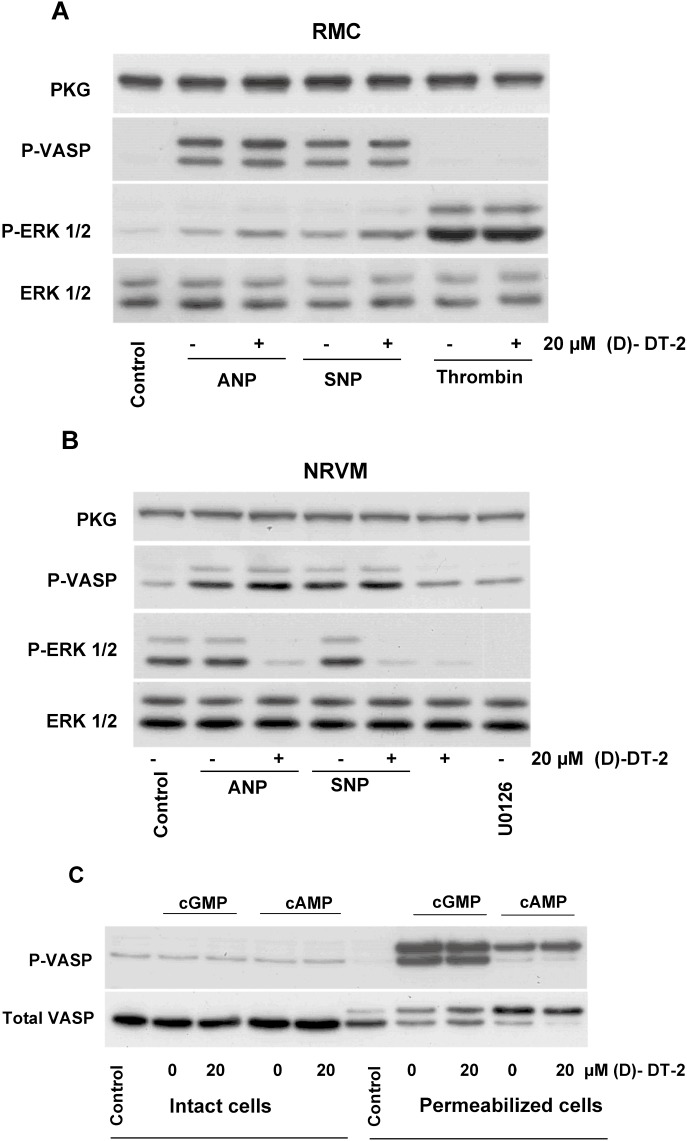Figure 6.

(D)-DT-2 does not inhibit PKG activation in intact and permeabilized RMC and in NRVM. (A) Intact RMC, (B) NRVM and (C) saponin-permeabilized RMC were pre-incubated for 30 min with 20 µM of (D)-DT-2 or ERK inhibitor U0126 (only for NRVM, 1 µM, 5 min) before 5 min stimulation with ANP (10 nM), SNP (5 µM), thrombin (0.1 U·mL−1) (in A), cGMP or cAMP (in C). Cells were washed with PBS and processed for Western blot analysis for VASP and ERK phosphorylation and PKG expression. In intact RMC, (D)-DT-2 does not inhibit PKG activity (P-VASP panel) and slightly enhances basal and thrombin-induced ERK1/2 phosphorylation. In NRVM, (D)-DT-2 also does not inhibit PKG activity (P-VASP panel). However, in contrast to RMC (compared to A), it potently (comparable to the specific ERK inhibitor U0126) inhibits ERK phosphorylation. In permeabilized RMC (C), in contrast to cell lysate (compare with Figure 3), (D)-DT-2 did not inhibit PKG or PKA activated by cGMP or cAMP, respectively. Incubation of non-permeabilized cells with cGMP or cAMP does not activate PKG or PKA. The data shown are representative of four independent experiments using different cell preparations.
